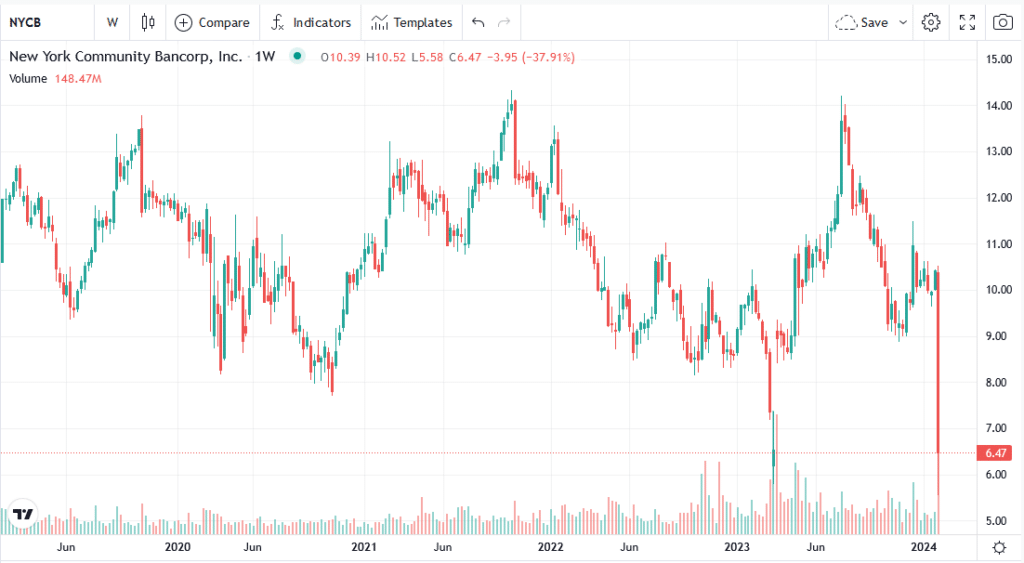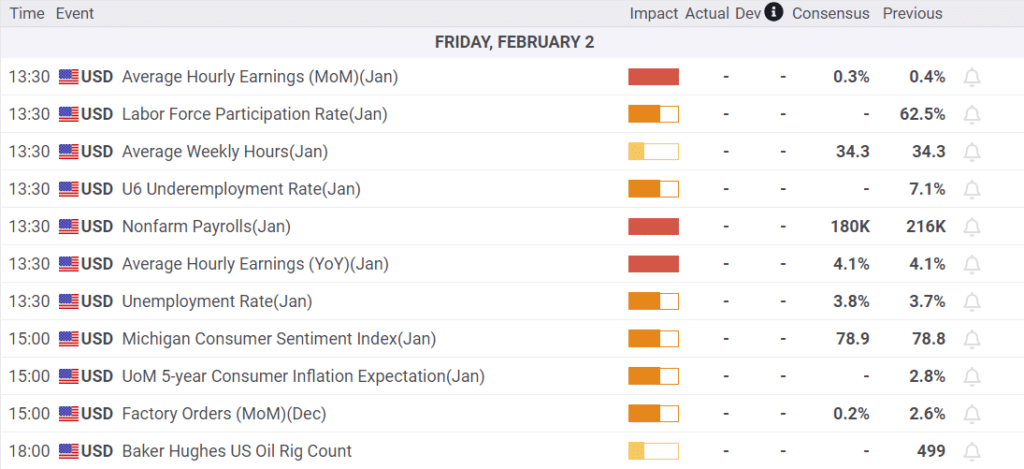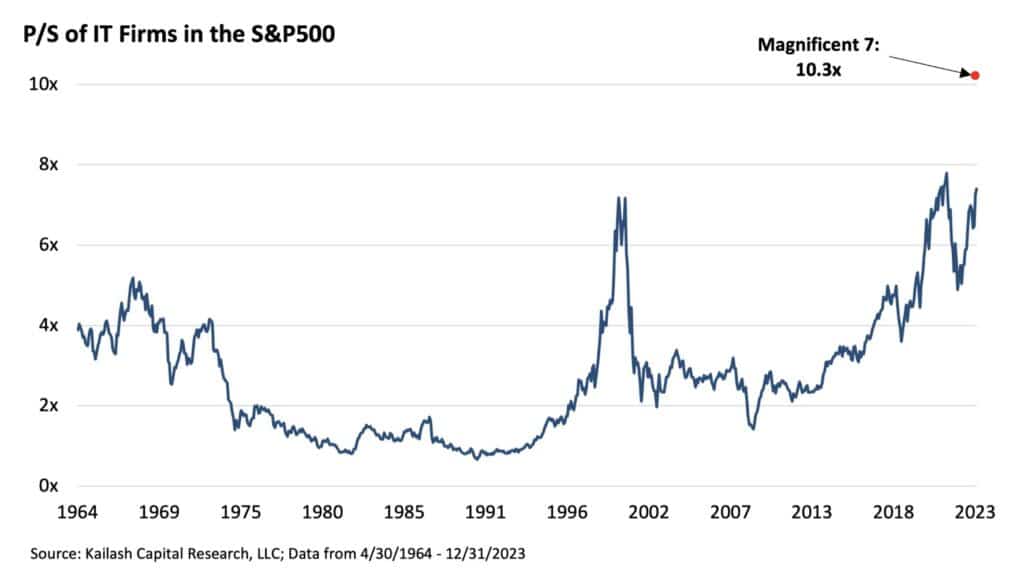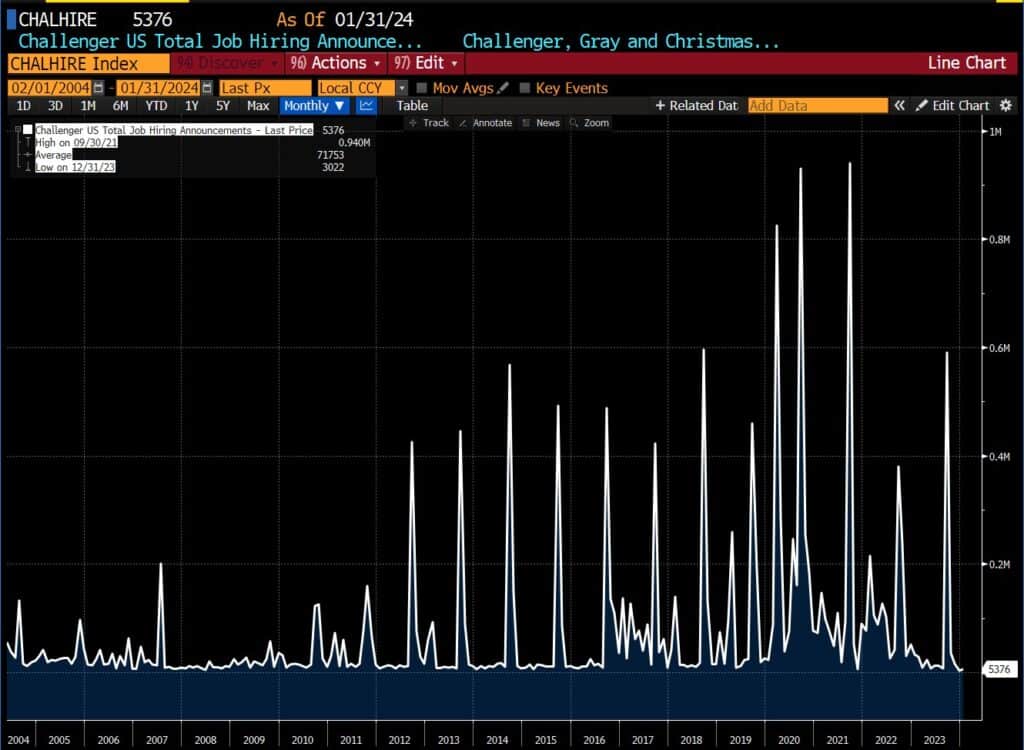Interestingly, the Fed removed the following statement from Wednesday’d FOMC statement: “The U.S. banking system is sound and resilient.” We bring that up because New York Community Bank (NYCB) fell over 40% earlier that day. Therefore, we must ask- are the banking problems from last year resolved, or is the Fed worried? NYCB reported a $260 million loss amidst expectations for a gain. Additionally, they reduced their dividend by 70%. Last March, NYCB bought a large percentage of the failed Signature Bank from the FDIC. The current loss is partly due to a significant build of loan loss reserves from Signature Bank assets.
This news comes a month before the Fed’s emergency loan program (BTFP) expires. Bond and loan prices are still below when the Fed enacted its BTFP bailout. Therefore, the risks to banks’ balance sheets are still present. Accordingly, closely watch the stock performance of the regional banks to help assess if this is a one-off problem or if the market is concerned that commercial real estate and other banking problems are starting to simmer again. As shown below, NYCB is now trading below the levels it traded at last March.
Earnings
Economy
Market Trading Update
A big reversal day in the market yesterday recouped most of the decline following the FOMC meeting on Wednesday. Overall, the market remains mildly overbought, but as discussed yesterday, that market held the trend channel support, keeping the bullish trend intact. So far, earnings remain mostly in line with lowered expectations, and the market’s focus continues to be on when the Fed’s rate cuts are coming.
Yesterday, after the close, Amazon (AMZN) reported better-than-expected results, with revenue climbing 14%. Meta (META) also beat on better-than-expected results and announced a first-ever dividend payment. These two companies are set to drive the market higher this morning.,
We used the open yesterday to add to some of our Dividend Equity Model holdings. We suggest continuing to use any weakness to rebalance risks accordingly.
Price To Sales For the Magnificent 7 Offers Concern
At the peak of the dot-com bubble, Scott McNealy of Sun Microsystems sternly warned shareholders as follows.
‘At 10 times revenues, to give you a 10-year payback, I have to pay you 100% of revenues for 10 straight years in dividends. That assumes I can get that by my shareholders. That assumes I have zero cost of goods sold, which is very hard for a computer company. That assumes zero expenses, which is really hard with 39,000 employees. That assumes I pay no taxes, which is very hard. And that assumes you pay no taxes on your dividends, which is kind of illegal. And that assumes with zero R&D for the next 10 years, I can maintain the current revenue run rate. Now, having done that, would any of you like to buy my stock at $64? Do you realize how ridiculous those basic assumptions are? You don’t need any transparency. You don’t need any footnotes. What were you thinking?’
At the time, Sun Microsystems traded with a price-to-sales ratio of 10. The graph below, courtesy of Kailash Capital Research, shows the entire technology sector trades at a price-to-sales ratio similar to that at the peak of the dot-com bubble. More stunning is the price-to-sales ratio for the Magnificent 7, which is currently at 10.3. McNealy cautions that it’s very tough to justify paying such a premium. In time, the Magnificent 7 will have incredible growth rates or, more likely, correct to a more sustainable valuation. The second graph shows the fate of Sun Microsystems (SUNW).
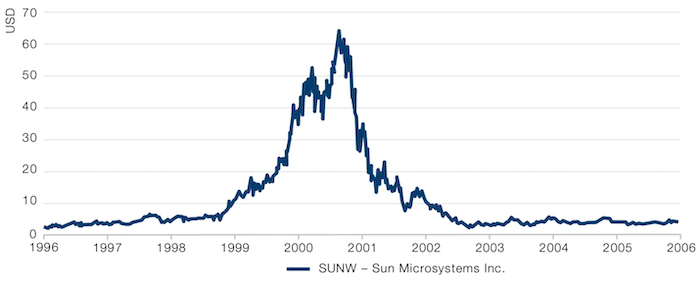
BLS Preview- Challenger Job Hires and Jobless Claims
Given that Powell now believes the labor market and inflation are on equal ground regarding future policy, the market will pay even more attention to tomorrow’s BLS jobs report. Thursday’s Challenger report showed that job hires in January hit their lowest level since at least 2004 at 5,376. For context, the prior three years and three years before the pandemic averaged approximately +50k jobs in January. Accordingly, this data confirms the weak hires data in the JOLTS report earlier this week.
Initial jobless claims jumped higher than estimates to 224K. Such is the highest weekly print since August. Continuing jobless claims reached 1.898 million, the highest since mid-November. Both are relatively low numbers but have begun trending higher.
Meanwhile, unit labor costs came in at +0.5%, more than half of estimates. This indicator should comfort the Fed that a price-wage spiral is not likely.
Tweet of the Day
“Want to have better long-term success in managing your portfolio? Here are our 15-trading rules for managing market risks.”
Related: Retirement Savers Are Piling Into Stocks. Is That a Good Idea?



